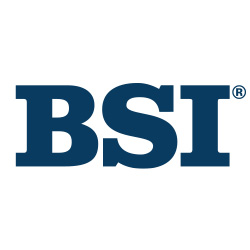SAP Payroll
Filter By
Browse By
- SAP Analytics and AI
- SAP Application Development and Integration
- All SAP Application Development and Integration
- SAP ABAP
- SAP ABAP Development Tools
- SAP ABAP Test Cockpit
- SAP API Management
- SAP BAPI
- SAP Basis
- SAP BRF
- SAP Business Application Studio
- SAP CMS
- SAP Design Studio
- SAP Development Tools
- SAP DevOps
- SAP EAI
- SAP EDI
- SAP Extension Suite
- SAP Fiori
- SAP Fiori Elements
- SAP Integration Suite
- SAP Low Code Application Development
- SAP Low Code Automation
- SAP Netweaver
- SAP Release Management
- SAP UI5
- SAP Web Application Server
- SAP Web IDE
- SAP Business Process Management
- SAP Center of Excellence
- SAP CIO
- SAP Customer Experience
- SAP Data and Data Management
- All SAP Data and Data Management
- SAP BW
- SAP BW/4HANA
- SAP Crystal Reports
- SAP Data Archiving
- SAP Data Center
- SAP Data Governance
- SAP Data Integration
- SAP Data Migration
- SAP Data Quality
- SAP Data Services
- SAP Data Strategy
- SAP Data Visualization
- SAP Data Warehouse Cloud
- SAP DMS
- SAP Document Control
- SAP EIM
- SAP ETL
- SAP ETL Tools
- SAP HANA
- SAP HANA Administration
- SAP HANA Deployment Infrastructure
- SAP HANA Studio
- SAP Master Data
- SAP Master Data Governance
- SAP MDM
- SAP Enterprise Architect
- SAP Enterprise Asset Management
- SAP ERP
- SAP Finance
- All SAP Finance
- SAP Accounting
- SAP AR AP
- SAP Asset Accounting
- SAP Billing Systems
- SAP BPC
- SAP BRIM
- SAP Cash Management
- SAP Central Finance
- SAP Controlling
- SAP COPA
- SAP Cost Center Accounting
- SAP Currency Risk
- SAP e-invoicing
- SAP FICO
- SAP Finance Automation
- SAP Advanced Financial Closing
- SAP Financial Consolidation
- SAP Financial Planning
- SAP FX Risk
- SAP General Ledger
- SAP Global Tax Management
- SAP Hyperion
- SAP Order to Cash
- SAP Payment Processing
- SAP Profitability Analysis
- SAP Rebate Management
- SAP S/4HANA Finance
- SAP SWIFT Compliance
- SAP Treasury Management
- SAP Universal Journal
- SAP Governance Risk and Compliance
- SAP Human Capital Management
- SAP Intelligent Technologies
- SAP Platform and Technology
- All SAP Platform and Technology
- SAP Business Technology Platform
- SAP Cloud Connector
- SAP Cloud Integration Platform
- SAP Cloud Migration
- SAP Cloud Platform
- SAP Cloud Providers
- SAP Cloud Strategy
- SAP Digital Signature
- SAP Container Platform
- SAP HANA Enterprise Cloud
- SAP Digital Asset Management
- SAP HEC
- SAP Digital Integration Hub
- SAP Hyperscalers
- SAP Infrastructure
- SAP Messaging
- SAP Smart Forms
- SAP Quality and Testing
- SAP Security
- SAP Spend Management
- SAP Supply Chain Management
- All SAP Supply Chain Management
- SAP APO
- SAP Asset Management
- SAP Business Network
- SAP Digital Manufacturing Cloud
- SAP Digital Twin
- SAP EWM
- SAP IBP
- SAP Inventory Management
- SAP Label Printing
- SAP Logistics
- SAP Manufacturing
- SAP Manufacturing Automation
- SAP MES
- SAP MII
- SAP MM
- SAP MRO
- SAP MRP
- SAP Order Management
- SAP Plant Maintenance
- SAP PLM
- SAP Production Planning
- SAP S&OP
- SAP SD
- SAP SPM
- SAP Supply Chain Planning
- SAP Track and Trace
- SAP Transportation Management
- SAP System Administration
What Is SAP Payroll?
Payroll is such a vital component to employee satisfaction that many companies are hesitant to make any changes — even if there are potential benefits to updating processes or technologies. This is reflected in SAP Payroll offerings — the traditional on-premise SAP Payroll and the cloud-based SAP SuccessFactors Employee Central Payroll. The cloud offering is essentially identical to the on-premise offering, except for where the servers are hosted.
SAP has hinted at plans to build a next-generation payroll solution, but that often takes a backseat to investments in other areas of its human resources (HR) technology suite.
Making an error on an employee’s paycheck is one of the fastest ways to receive a notice of resignation, so the reticence to change payroll at many companies, and the motivation for SAP to build a new payroll system, is explainable.
What Is SAP Payroll?
Payroll is such a vital component to employee satisfaction that many companies are hesitant to make any changes — even if there are potential benefits to updating processes or technologies. This is reflected in SAP Payroll offerings — the traditional on-premise SAP Payroll and the cloud-based SAP SuccessFactors Employee Central Payroll. The cloud offering is essentially identical to the on-premise offering, except for where the servers are hosted.
SAP has hinted at plans to build a next-generation payroll solution, but that often takes a backseat to investments in other areas of its human resources (HR) technology suite.
Making an error on an employee’s paycheck is one of the fastest ways to receive a notice of resignation, so the reticence to change payroll at many companies, and the motivation for SAP to build a new payroll system, is explainable.
Vendors such as Deloitte offer SAP Payroll and SAP SuccessFactors Employee Central Payroll implementation and consulting services. There are companies, such as Alight, that also administer payroll services for an organization partially or completely with the option to use technologies like SAP Employee Central Payroll.
Many SAP customers also use non-SAP payroll systems that integrate with SAP systems such as ADP or Paychex.
Key SAP Payroll Considerations for SAPinsiders
- Mainstream maintenance for on-premise SAP Payroll is scheduled to end in 2027. Current SAP Payroll customers will have to consider the option of moving to SAP SuccessFactors Employee Central Payroll in the cloud, which currently has no end-of-maintenance date, or a non-SAP payroll product. Staying with on-premise SAP Payroll beyond 2027 will require extra maintenance fees or third-party maintenance services.
- Payroll has slower cloud adoption than other HR technologies. In our recent HR Technology State of the Market report, among surveyed respondents that indicated they were using payroll technology, 18% indicated that the system was currently deployed in the cloud, the lowest cloud adoption rate of any technology mentioned. Cloud payroll adoption is rising, with another 19% currently implementing a cloud payroll solution. However, nearly 11% of respondents indicated having no plans for payroll in the cloud, more than double the proportion of any other technology.
- Payroll accuracy is a top HR objective. In the same HR Technology State of the Market report mentioned above, reducing errors in time and payroll was the top HR technology strategy objective among respondents, which were predominantly HR professionals. Getting payroll right isn’t just a concern for the finance and compliance departments. Those in HR know the importance it holds to their ability to retain talent.
470 results
-

- SAP Payroll
 Premium
Premium
Understand Leading Practices for Defining Your Payroll Systems of Record Using a Hybrid Solution
Reading time: 6 mins
Learn how to define the systems of record for all data components involved in SAP payroll processes, the designation of where they exist, and where they are maintained: SAP payroll on-premise, SAP SuccessFactors Employee Central, and SAP SuccessFactors Employee Central Payroll. Membership Required You must be a member to access this content.View Membership LevelsAlready a…
-

- SAP Payroll
 Premium
Premium
Understanding BSI 10.0 and Its Integration with SAP US Payroll
Reading time: 12 mins
Learn about the relationship between SAP and BSI 10.0 for US payroll. Companies running SAP Payroll in the US need this functionality. Learn about the key information that you need to know to update your system to BSI 10.0 as required by SAP. Key Concept BSI 10.0 is the latest version of the Business Software...…
-

- SAP Payroll
 Premium
Premium
An Overview of Canadian Payroll in SAP ERP HCM
Reading time: 31 mins
Learn how various statutory contributions and deductions for Canadian payroll can be configured in the SAP ERP HCM payroll system. Key Concept Various technical wage types, cumulating classes, and data from tables are used in the calculation of statutory contributions and deductions for Canadian payroll in an SAP payroll system. These calculations often can be...…
-
-

- SAP Payroll
 Premium
Premium
The Options for SAP SuccessFactors Payroll and SAP HRIS
Reading time: 8 mins
Historically, Human Resources was a back-of-house function with sympathetic counselors and a box of tissues at the ready. Today, HR is part of the C-Suite, often referred to as the leaders who manage a company’s most important assets, its employees. Putting sensitive employee data in the cloud could be a barrier for customers, but reluctance…
-

 Premium
Premium
Upgrades Part 3: Quickly Fix Two Common Payroll Errors
Reading time: 9 mins
You may face the two payroll problems described here when you upgrade your HR system from SAP R/3 4.6C to mySAP ERP Central Component 5.0. Learn how to permanently fix them. Key Concept Personnel calculation schemas describe the sequence and contents of a country-specific payroll or time evaluation program (or driver). A payroll driver is...…
-

 Premium
Premium
Correctly Clear Claims in SAP’s US Payroll: Part 2
Reading time: 11 mins
Walk through the three basic steps of the claims process. Then, apply these principles to deal with more complex scenarios and unusual claims cases. Key Concept The claims clearing processes uses wage types to handle claims. To forgive a claim, you can use wage type 9FEx for earnings, 9FPx for pretax deductions that were refunded...…
-

 Premium
Premium
Processing Hourly Payments Based on Union Agreements or Positions
Reading time: 19 mins
Learn how to calculate the hourly rate based on union agreements, positions, or premiums with the extra-pay indicator functionality in SAP payroll. See how these various options can be used and customized in SAP payroll to calculate and process the hourly payments of the employees based on client requirements. Key Concept There are three primary...…
-
-

 Premium
Premium
Set Up Flexible Benefit Deductions with Deduction Models
Reading time: 10 mins
You can use a benefit deduction model for benefit plans such as medical, dental, and life insurance to vary the frequency of deductions. Key Concept Base your deduction model on the frequency of deductions and what percentage you want to take out each period. Most employees have some type of deduction coming out of their...…
-

 Premium
Premium
Effective Data Management Strategies for Posting Payroll Results to Accounting
Reading time: 8 mins
Learn how you can enhance the performance of posting SAP Payroll results to accounting by optimally managing and controlling the size of tables PPOPX and PPOIX in SAP ERP HCM 6.0. Following the successful execution of a payroll run, one of the subsequent activities that must be performed is posting payroll results to Financial Accounting...…
-

 Premium
Premium
Making Sense of the Changing SAP ERP HCM and SuccessFactors Landscapes
Reading time: 14 mins
Get up to speed on the history, new terminology, and future designs of SAP ERP HCM and SuccessFactors to understand where you fit in and to help you plan your future. Key Concept The term full cloud refers to SuccessFactors cloud HR offerings, Employee Central and any of its Talent modules (Recruitment, Performance Management, Learning,...…
Featured Insiders
-

Gaurav Pandey
Principal SAP Architect, Amgen
-

Marc Auro
Managing Director, CUVIV UK
-

Daniil Serebrennikov
VTM Software Inc
Become a Member
Unlimited access to thousands of resources for SAP-specific expertise that can only be found here.
Become a Partner
Access exclusive SAP insights, expert marketing strategies, and high-value services including research reports, webinars, and buyers' guides, all designed to boost your campaign ROI by up to 50% within the SAP ecosystem.
Upcoming Events
Related Vendors
Your request has been successfully sent


